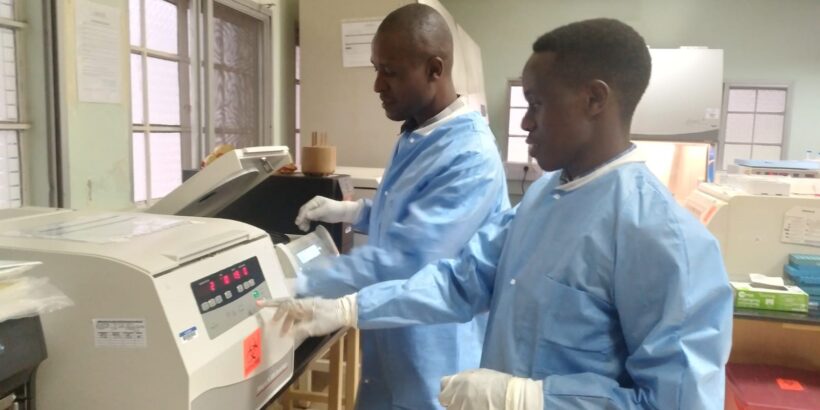Last month in Kericho, Kenya, our team was proud to launch a Phase 3 study of the EuTCV typhoid conjugate vaccine (TCV) candidate. As principal investigators based at Kenya Medical Research Institute (KEMRI) in Kericho, we have been working toward this milestone for many months.
At the same time, the government of Kenya recently made the decision to introduce TCV into routine immunization. Kenya plans to introduce a TCV already prequalified by the World Health Organization (WHO). As Kenya has a significant burden of typhoid and a growing prevalence of drug-resistant typhoid strains, TCVs will provide much-needed protection.
Supporting a new candidate TCV
Compared to older typhoid vaccines, TCVs have longer-lasting protection, require only one dose, and are suitable for children younger than two years of age. This younger age eligibility allows for inclusion in routine childhood immunization programs. WHO recommends programmatic use of TCVs in countries with a high burden of typhoid or where drug-resistant typhoid is a significant threat. As of mid-2022, two TCV products are globally available.
Manufactured by EuBiologics Co., Ltd in Chuncheon, Korea, EuTCV is one of several additional TCV candidates in development that could help diversify the TCV market. It was previously shown to be safe and generate a strong immune response in a Phase 1 trial and a Phase 2/3 trial in adults and children in the Philippines. EuBiologics will seek to have EuTCV WHO-prequalified, which would enable EuTCV to join the list of TCVs that are already globally available.
As part of post-prequalification data requirements, the study in Kenya will assess the safety and immune response of EuTCV among infants, children, and adults in Kericho. The study is being supported by PATH in partnership with EuBiologics, KEMRI, the Walter Reed Army Institute for Research (WRAIR), and HJF Medical Research International. We are the second of two sites; the first site in Sandiara, Senegal, launched in May.
Between the two sites, the study aims to enroll 3,255 participants between 6 months and 45 years of age. Hopefully, the results will help confirm that vaccination with EuTCV is safe in typhoid-endemic settings in sub-Saharan Africa and that it does not interfere with the immune response to other routine vaccines, such as measles-rubella and yellow fever.
Preparing for Kenya’s TCV introduction
The latest estimates from the Global Burden of Disease study indicate that, in 2019, Kenya had around 126,000 typhoid cases and lost more than 1,500 people to typhoid. More than half of the lives lost were among children younger than the age of 15. Each typhoid case can put a tremendous burden on families, requiring significant expenses and weeks lost from work or school.
In addition, drug-resistant typhoid is a significant threat, both globally and in Kenya. An analysis of typhoid samples from three different parts of Kenya found that 82.4% of samples were resistant to all five of the commonly available drugs. As drug resistance spreads around the globe, it threatens to make typhoid more severe, more expensive, and—eventually—untreatable. Given the significant burden of typhoid in Kenya, we strongly support the Kenyan government’s decision to move forward with TCV introduction.
Combatting typhoid—past, present, and future perspectives
In combatting typhoid, we must look to the past, present, and future. The past can show us how typhoid has evolved and is likely to continue evolving. In the present, we know our current burden of disease and the options we have now to prevent additional suffering. Therefore, it is clear that current TCVs will have a tremendous benefit for Kenya.
As we look to the future, we see a need for more TCV candidates and additional evidence to further influence decision-making. We hope the results of our study will help to further TCV science and future market diversity. We are proud to contribute to the clinical evaluation of a future TCV product while Kenya is simultaneously taking steps to combat typhoid now.
The views expressed are those of the authors and should not be construed to represent the positions of the U.S. Army, the Department of Defense, or HJF.
Cover photo: Two laboratory technicians at KEMRI receive and process samples. Credit: Rose Adeny.



